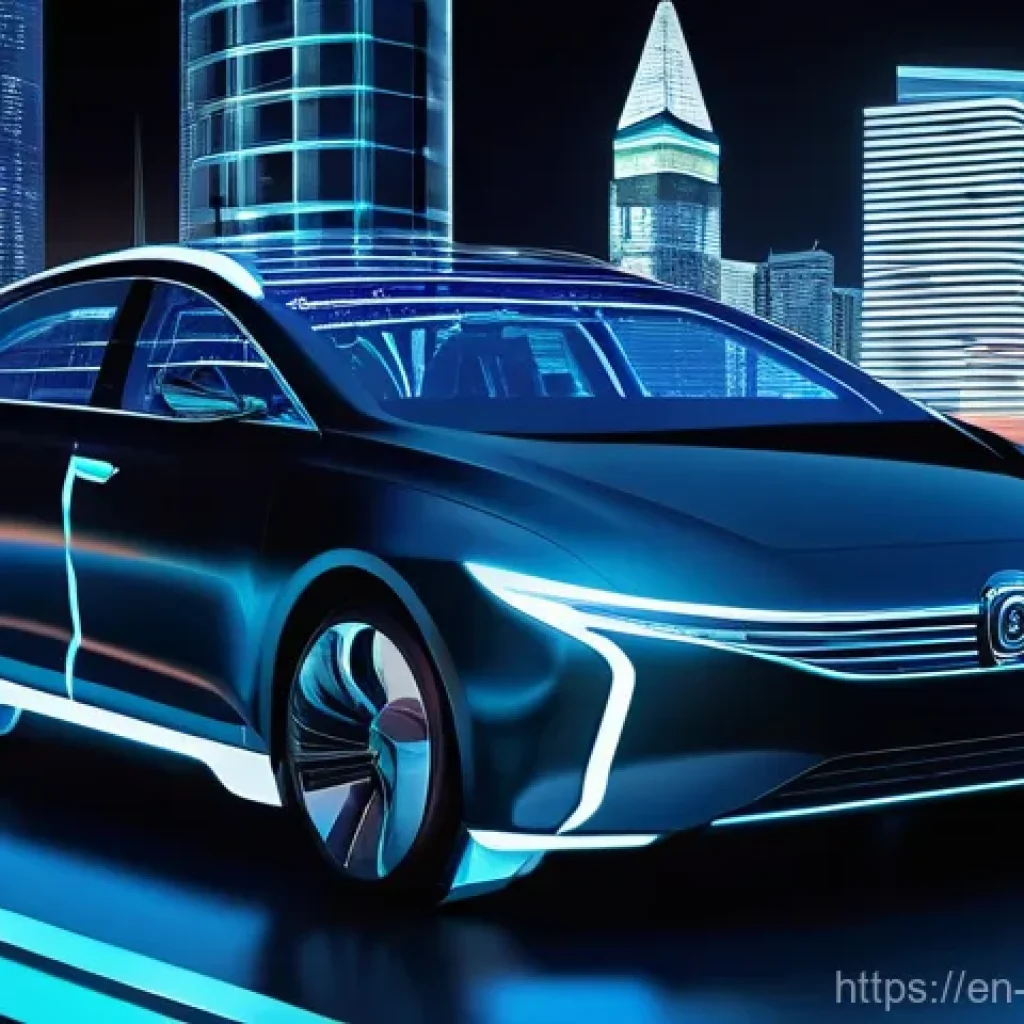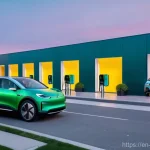The future of driving is already here, but let’s be honest, it’s still a bit of a wild west when it comes to the rules of the road for self-driving cars.
Every day, it feels like there’s a new headline about a dazzling breakthrough or, occasionally, a concerning mishap, and right alongside these innovations, the legal landscape is trying desperately to keep pace.
I’ve personally been diving deep into this fascinating evolution, trying to make sense of what’s legal, what’s coming next, and what all these new regulations really mean for us as drivers – or perhaps, future passengers!
We’re not just talking about tech anymore; we’re navigating complex ethical dilemmas, figuring out who’s liable when things go sideways, and wrestling with how different states and countries are approaching this revolutionary technology.
From varying state-by-state policies in the US to emerging frameworks across Europe, it’s a patchwork that’s constantly evolving. It truly feels like we’re witnessing history in the making, and understanding these laws isn’t just for legal buffs – it’s for anyone who’ll eventually share the road with these incredible machines.
Let’s make sure you get the full picture!
Navigating the Wild West: Who’s Really in Charge When the Car Drives Itself?

Unpacking Liability: Drivers, Manufacturers, and the Software in Between
Okay, let’s talk about the elephant in the room when it comes to self-driving cars: when something goes wrong, who’s actually on the hook? This is a question that’s kept me up at night, and I’m sure many of you have wondered the same. It’s not as simple as blaming the human driver anymore, is it? In the good old days, if you rear-ended someone, it was pretty clear-cut: your fault, your insurance. But with autonomous vehicles, it’s a whole new ballgame. We’re talking about a potential shift from driver negligence to issues with the vehicle’s technology itself. If the car’s software glitches or its sensors fail, suddenly the manufacturer or even the software developer could be liable under product liability laws. Imagine that: a software update causing a fender bender and suddenly a tech company is facing a lawsuit!
What I’ve found interesting is that the level of autonomy plays a huge role here. For vehicles with lower levels of automation (think Level 2, where the driver still needs to monitor and be ready to take over), the human behind the wheel is often still held responsible if they fail to intervene when necessary. But as we creep into Level 3 and beyond, where the car handles most driving tasks in certain conditions, the waters get incredibly murky. If a vehicle operating at Level 4 or 5 autonomy crashes due to a design flaw or a software bug, the manufacturer could be held responsible. This means car companies aren’t just selling us a vehicle; they’re selling us a complex system, and they need to ensure that system is safe and reliable. And honestly, as someone who loves driving, but also sees the potential for these new technologies, this evolving liability framework is both exciting and a little daunting.
The Shifting Sands of Accountability: Beyond the Driver
It’s not just about the driver or the manufacturer, though. The ecosystem of self-driving cars is vast, bringing in other potential parties who might bear responsibility. Think about the third-party software companies that develop the intricate algorithms, or even the entities responsible for maintaining our roads and traffic signals. If a faulty traffic signal leads to an autonomous vehicle accident, could the city government or infrastructure provider be partially liable? Absolutely. It’s a complex web that requires meticulous investigation after an incident. This is why when I look at the future of driving, I don’t just see cool tech; I see a fundamental re-evaluation of how we assign fault and ensure justice. The old frameworks simply don’t cut it anymore, and lawmakers are scrambling to catch up. Many states in the US, for example, are still grappling with clear statutes, often relying on traditional negligence laws while they try to figure out new regulations. It’s a testament to how quickly this technology is advancing, far outstripping our legal systems.
A Jigsaw Puzzle of Rules: Decoding Regulations Across Borders
America’s State-by-State Scramble for Self-Driving Laws
Here in the U.S., it feels like every state is writing its own playbook for self-driving cars, and honestly, it’s a bit of a chaotic scene. There isn’t one big, overarching federal law that covers everything, which means companies and drivers have to navigate a patchwork of regulations that vary wildly from one state border to the next. Over 35 states have enacted some form of legislation related to autonomous vehicles, but the specifics can be dramatically different. For instance, some states, like California, require testing permits and “black-box” recorders in AVs, along with safety reports. Meanwhile, states like Nevada and Arizona are a bit more open, allowing fully driverless cars but with their own strict safety and reporting mandates. Then you have places like New York and Florida, which, at least for some purposes, still insist on a licensed human driver being present during testing. It’s a head-scratcher for anyone trying to deploy these vehicles nationally, and it really highlights the “wild west” feeling of this whole evolution. I’ve been tracking this closely, and it truly makes you appreciate the complexity of integrating such advanced tech into our existing societal structures.
Europe’s Unified Vision vs. National Nuances
Across the pond in Europe, the approach is, in some ways, more harmonized, which is a relief when you consider how many countries are involved! The EU has been making significant strides, with regulations like the General Safety Regulation (EU) 2019/2144 establishing safety groundwork and a framework for approving automated and driverless vehicles. Since 2022, highly automated vehicles with autonomous driving functions can be authorized in the EU, though their use is often initially restricted to specific, authorized routes. There’s a strong push for uniform procedures and technical specifications, aiming to reduce barriers for cross-border deployment.
However, even with a broader EU framework, individual member states like Germany have also introduced their own specific legislation. For example, Germany’s “Law on Fully Automated Driving” from 2021 provides a legal framework for SAE Level 4 vehicles to operate on public roads without a driver physically present, but only in pre-approved operating areas. It’s a fascinating balance between continental harmonization and national autonomy in tackling this revolutionary technology. My personal take is that this layered approach, while complex, allows for both broad safety standards and tailored responses to local conditions and concerns. It also showcases the challenge of balancing innovation with robust public safety.
The Ethical Compass: Programming Morality into Machines
The Trolley Problem on Wheels: Tough Decisions for AI
This is where things get really deep, and frankly, a little unnerving. We’re not just talking about code anymore; we’re talking about ethics. How do you program a car to make a moral decision in a split-second, life-or-death situation? This is the modern-day “trolley problem” playing out on our roads. Imagine the car has to choose between swerving to avoid a pedestrian, potentially harming its own passengers, or continuing straight, which would injure the pedestrian. Who gets to decide that? The programmers? The car owner? Lawmakers? It’s an incredibly complex ethical dilemma, and there’s no easy answer. What I’ve learned is that there’s a huge debate, with some surveys showing people want others to use utilitarian AVs (sacrificing passengers for the greater good) but personally prefer AVs that protect them at all costs. This inherent conflict is a massive challenge for the industry and regulators alike, demanding a level of philosophical consideration that goes far beyond traditional engineering.
Building Trust and Transparency into Autonomous Systems
Beyond these extreme scenarios, there’s a broader ethical consideration: trust. For self-driving cars to truly integrate into society, people need to trust them implicitly. This means transparency in how these systems are programmed, how they learn, and how they prioritize different outcomes. Designers have a responsibility to be clear about potential risks and to make ethical decisions about the car’s programming. If an autonomous vehicle is involved in a crash, understanding the algorithms and the decision-making process becomes crucial. This also touches on how human drivers will interact with these machines. Will other drivers on the road know if a self-driving car is under human or machine control? Will they understand its “social” driving norms? These are not just technical questions; they’re deeply human ones. Building truly ethical AI in cars means bridging the gap between cold, hard logic and the nuanced, often unpredictable, realm of human values and interactions. It’s a conversation that needs to happen now, before these cars become ubiquitous.
Redefining Protection: Insurance in the Driverless Era
From Driver-Centric to Product-Centric Coverage
My insurance premiums have always been a direct reflection of my driving habits, my age, and my car model. But what happens when the “driver” is an AI? This is a question that’s sending ripples through the entire auto insurance industry. The traditional model, which assumes a human is responsible for decisions and accidents, is already starting to buckle. As autonomous vehicles (AVs) become more prevalent, the liability is shifting from individual drivers to the manufacturers or software developers. I mean, if a Level 4 or 5 autonomous car crashes due to a system malfunction, it makes sense that the automaker, rather than the “passenger,” should bear the financial brunt.
Experts are predicting that traditional personal auto insurance might even become largely obsolete in the most aggressive adoption scenarios, potentially replaced by product liability insurance for car manufacturers. This means insurers are having to develop entirely new risk models, moving away from human behavior data to incorporate data from sensors, AI systems, and vehicle software. It’s a massive paradigm shift, and honestly, it’s exciting to think about how this will reshape one of the most fundamental aspects of car ownership. My hope is that it eventually leads to safer roads and perhaps, in the long run, more affordable overall costs for everyone, even with potentially higher repair costs for these advanced vehicles.
New Policies and the Puzzle of Shared Responsibility

So, what will the new insurance landscape look like? We’re already seeing discussions about specialized policies. Things like product liability insurance (covering design or software defects) and even cyber liability insurance (protecting against data breaches or hacking) are becoming critical. Some foresee a future where insurance is bundled directly into the cost of the vehicle or a subscription service for autonomous driving, shifting the model from personal to commercial or manufacturer-based.
And what about shared responsibility? Some models suggest a hybrid approach where liability is shared between the vehicle owner, manufacturer, and third-party software providers. This complexity means that when an accident happens, determining fault will require a thorough investigation of various contributing factors, from software glitches to road conditions to another human driver’s actions. Even in countries with more advanced AV legislation, like the UK’s Automated and Electric Vehicles Act, the motor insurer is often made primarily liable, with a right of recovery against the manufacturer if the fault lies with the autonomous system. This gives me a sense of relief, knowing that at least for the injured party, the claims process might become less arduous. It’s clear that the industry is still figuring this all out, and as a consumer, staying informed about these changes will be key.
The Digital Footprint: Protecting Your Data in a Smart Car
Cars as Data-Gathering Machines: More Than Just a Ride
You know how our smartphones collect insane amounts of data about us? Well, guess what – self-driving cars are essentially super-computers on wheels, and they’re doing the same, if not more! These vehicles are constantly collecting, processing, and storing vast amounts of information. We’re talking about everything from your location data, driving habits, and destinations to images of faces and license plates captured by the car’s sensors. It’s a treasure trove of personal data, and it raises some serious questions about privacy. I’ve often wondered about the sheer volume of data being generated and where it all goes.
The privacy implications are enormous, especially if this sensitive information falls into the wrong hands or is misused. For instance, companies might monitor driver alertness in semi-autonomous cars, which, while critical for safety, also means collecting biometric data on every driver. It’s a delicate balance between safety, convenience, and our fundamental right to privacy. Even with safeguards like blurring faces and license plates, the granular nature of the data means the risk is always there. This issue really emphasizes the need for robust data protection policies and transparency from manufacturers. It’s not just a car; it’s a mobile data center, and we need to treat it as such.
Navigating GDPR and the Patchwork of Privacy Laws
When it comes to protecting all this data, the legal landscape is, once again, quite fragmented. In Europe, the General Data Protection Regulation (GDPR) sets stringent rules for processing personal data, requiring “privacy by design” and clear consent for data collection. This means car manufacturers developing for the EU market have to integrate data protection measures right from the start of the product development process, aiming for data minimization through techniques like pseudonymization. However, ensuring GDPR compliance for global companies operating across different jurisdictions can be a monumental task.
In the U.S., there’s no single federal privacy law specifically for autonomous vehicles. Instead, it’s a mix of existing federal laws (which may not always fully apply to AV data) and state laws, many of which focus on data breach notifications rather than substantive privacy protections. Some states are starting to consider ownership of data from self-driving cars, like North Dakota’s study on the data gathered by these vehicles. This disparity means that privacy policies for AVs need to be incredibly comprehensive, balancing commercial growth with consumer protection and compliance across a complex legal patchwork. As a user, I truly believe that demanding strong data privacy and security policies isn’t just a tech issue – it’s a personal liberty issue in the age of autonomous driving.
Paving the Way: The Future of Testing and Deployment
From Test Tracks to Public Roads: Proving Safety
Before these incredible machines become commonplace, they have to prove they’re safe. And I mean *really* safe. That means rigorous testing, which is happening right now all over the world. Companies are taking their prototypes from controlled test tracks onto public roads, collecting vast amounts of real-world data to refine their systems. This “development testing” is crucial for improving the autonomous driving systems based on actual road conditions and unexpected encounters.
However, the regulations around this testing are still evolving, and just like other aspects of AV law, they can differ significantly. In the U.S., for example, some states permit fully driverless testing, while others still require a human safety driver to be present. In Europe, while there’s a drive for harmonization, there hasn’t been a common legal foundation for testing across all EU member states. The European Commission, along with national authorities, is actively working on guidelines to standardize these testing requirements, aiming to simplify procedures and ensure consistent safety standards across the continent. It’s a complex and ongoing effort, but it’s absolutely vital for building the confidence and trust needed for widespread adoption.
The Road Ahead: Harmonizing Standards for Global Adoption
The ultimate goal for many manufacturers and regulators is a harmonized framework that allows autonomous vehicles to operate seamlessly across different regions, and eventually, globally. This isn’t just about making it easier for tech companies; it’s about ensuring safety and interoperability for everyone. International agreements, like some UN regulations, are already starting to allow Level 3 cars to travel at higher speeds in specific traffic situations in Europe.
The push is on for uniform testing and approval procedures for granting operating permission, along with clear prerequisites for defined operating ranges and technical requirements. This includes crucial aspects like cybersecurity measures and fail-safe mechanisms to handle unexpected situations. It’s a massive undertaking, requiring collaboration between governments, industry, and safety experts. From my perspective, seeing these efforts to create a consistent, reliable standard gives me a lot of hope. It means we’re moving closer to a future where these amazing vehicles aren’t just novelties but a safe, integral part of our daily lives. The thought of a future where my commute is handled autonomously, safely, and efficiently across state or even national borders is truly inspiring!
| Aspect | United States (General Trend) | European Union (General Trend) |
|---|---|---|
| Regulatory Approach | Fragmented state-by-state laws with federal guidelines. No single national law. | Harmonized framework (e.g., General Safety Regulation) with national adaptations. |
| Liability Framework | Shifting from driver negligence to product liability for higher autonomy levels. Driver still liable for lower levels. | Combination of driver, holder, and manufacturer liability. Specific laws in some countries. |
| Testing on Public Roads | Varies by state; some allow fully driverless, others require human oversight. | Allowed but often restricted to authorized routes; working towards harmonized guidelines for cross-border testing. |
| Data Privacy | Patchwork of federal and state laws; focus on data breach notifications. | Stronger, centralized regulations (GDPR) requiring privacy by design and explicit consent. |
| Ethical Programming | Ongoing discussions, less codified into law at present. | Acknowledged as high-risk by AI Act, aiming for transparency and accountability. |
Wrapping Things Up
So, there you have it – a whirlwind tour through the fascinating, often perplexing, world of self-driving cars. It’s clear that these vehicles are so much more than just a new way to get around; they’re sparking a massive re-evaluation of our laws, our ethics, and even how we define responsibility on the road. From the shifting sands of liability to the complex dance of global regulations, and the deep ethical questions they pose, autonomous vehicles are truly pushing the boundaries of what we thought possible. As someone who lives and breathes this tech, I honestly believe we’re on the cusp of a transportation revolution, and navigating it together, with open eyes and informed minds, is going to be quite the adventure.
Handy Tips for the Road Ahead
1. Keep an Eye on Local Legislation: Since the legal landscape for autonomous vehicles is still very much a patchwork, especially in the US with its state-by-state variations, it’s incredibly important to stay informed about the laws in your specific region. What’s allowed in California might be a no-go in New York, and these distinctions can affect everything from vehicle registration to insurance requirements and even where certain levels of autonomous driving are permitted. I’ve personally seen how quickly these regulations can change, sometimes without much public fanfare, so subscribing to relevant automotive news feeds or government transportation updates can save you a lot of headaches. Understanding these local nuances isn’t just for AV owners; it impacts every driver sharing the road, helping us all navigate this evolving environment more safely and confidently. Staying educated means you’re always a step ahead, ready for whatever the future of driving throws your way, and believe me, it’s constantly changing.
2. Scrutinize Your Car’s Data Privacy Policy: Autonomous vehicles are essentially sophisticated mobile data centers, constantly collecting vast amounts of information about you, your driving habits, and your surroundings. Before you even consider purchasing or using a vehicle with advanced driver-assistance systems, take the time to read – really *read* – the manufacturer’s data privacy policy. Understand what data is being collected, how it’s being stored, who it’s shared with, and for what purposes. This is often buried in the fine print, but it’s crucial for your digital privacy. I always advise people to treat their car like another smart device, demanding the same level of transparency and control over their personal information. If you’re uncomfortable with any aspect of their data practices, don’t hesitate to reach out to the manufacturer for clarification or consider alternatives. Your data footprint is expanding, and you have a right to know who’s tracking it.
3. Re-evaluate Your Auto Insurance Needs: The traditional auto insurance model, largely based on human driver behavior, is undergoing a significant transformation with the rise of autonomous vehicles. As liability shifts towards manufacturers and software providers for accidents caused by system malfunctions, your existing policy might not cover all the new complexities. I strongly recommend contacting your insurance provider to discuss how autonomous features or a fully self-driving car might impact your coverage, premiums, and claims process. Some insurers are already developing specialized policies that account for product liability or even cyber liability. Don’t assume your old policy will just adapt; proactive communication with your agent can help you understand potential gaps and ensure you’re adequately protected in this new era. It’s better to be informed and prepared than to face an unexpected financial burden after an incident where the fault might not be yours alone.
4. Understand the “Human Element” in Autonomous Driving: Even with the most advanced autonomous systems, the human element remains critically important. Most vehicles currently on the road offer Level 2 or Level 3 autonomy, meaning the driver is still expected to monitor the environment and be ready to take over at a moment’s notice. Over-reliance on automation without understanding its limitations can be incredibly dangerous. I’ve personally experienced moments where a system struggled with an unusual road condition or unexpected obstacle, and my immediate intervention was necessary. Always remain engaged, know how to disengage the autonomous features quickly, and be aware of your vehicle’s specific capabilities and limitations. Never let your guard down entirely; think of yourself as the ultimate backup system, ready to step in when the AI reaches its limits. This vigilance is key to safely integrating these incredible technologies into our daily lives, ensuring that innovation doesn’t come at the cost of safety.
5. Engage with the Future of Mobility: The development and deployment of autonomous vehicles are not just technical feats; they are societal shifts. Your voice and perspective matter in shaping this future. Get involved in local community discussions, share your thoughts with policymakers, and stay informed through reputable sources. The ethical dilemmas, regulatory frameworks, and privacy concerns surrounding AVs are still being debated and decided upon, and public input is invaluable. Organizations focused on consumer safety, transportation innovation, and data privacy are excellent resources. By actively participating in the conversation, whether through surveys, town halls, or simply staying educated, you can contribute to creating a future where autonomous vehicles are not only efficient and convenient but also safe, equitable, and aligned with our collective values. This isn’t just happening *to* us; it’s something we can actively help build.
Key Takeaways
The advent of self-driving cars is fundamentally reshaping our understanding of liability, prompting a shift from driver negligence to manufacturer responsibility for system failures. Regulatory frameworks are a complex mosaic, especially across different countries and even states within the US, necessitating a push for harmonization. Deep ethical considerations, like the “trolley problem,” underscore the challenge of programming morality into AI. Furthermore, the insurance industry is being forced to innovate, moving towards product-centric policies, while the sheer volume of data collected by these vehicles highlights critical privacy concerns. Ultimately, integrating autonomous vehicles demands a collaborative, multifaceted approach involving technology, law, ethics, and consumer trust to pave the way for a safer, more efficient future of mobility.
Frequently Asked Questions (FAQ) 📖
Q: So, if a self-driving car gets into an accident, who actually takes the blame? It feels like a real head-scratcher!
A: Oh, this is the question everyone asks, and honestly, it’s where things get super intricate. My take? It’s nowhere near as simple as pointing a finger at a human driver anymore.
We’re talking about a multi-layered puzzle. When a crash happens with an autonomous vehicle, liability could fall on several shoulders. If there’s still a human behind the wheel, even if the car is in an assisted driving mode, that human driver might still be held responsible if they failed to intervene when required or were distracted.
Think of it like a co-pilot who dozes off; even if the autopilot is on, the human has a duty. But here’s where it gets really interesting: if the accident is due to a system malfunction, a software glitch, or a design flaw, then the car manufacturer, or even the software developer, could be on the hook.
We’re seeing a shift towards product liability in these cases. Some states are even starting to consider the vehicle owner the “operator” in some fully autonomous scenarios, which is a whole new legal frontier.
It’s a messy landscape right now, and honestly, it often requires a deep investigation into the vehicle’s data recorders—you know, like a black box on a plane—to figure out what exactly went wrong.
What I’ve seen is that the outcome often depends heavily on the specific circumstances of the accident and the level of autonomy the car was operating at.
It’s why I always tell people that understanding the different levels of automation is key, because it directly impacts who might be liable.
Q: Are the laws for self-driving cars the same everywhere, like across different states in the US or countries in Europe? Or is it a wild mix?
A: A wild mix, my friend, absolutely a wild mix! If you’re hoping for a single, harmonized set of rules, prepare for a bit of disappointment right now. In the US, it’s a classic “patchwork” scenario.
Over 35 states have enacted their own laws related to autonomous vehicles, but they are all over the place. Some, like California and Nevada, allow for extensive testing, often with strict reporting requirements.
Others might still insist on a licensed human driver being present during testing, like New York. And get this, a few states haven’t even addressed the legality of self-driving cars at all, simply relying on existing vehicle safety regulations.
On the federal side, agencies like NHTSA issue voluntary safety guidelines, but there’s no comprehensive national law to tie it all together. This means a car manufacturer has to navigate a labyrinth of different rules for every state they operate in, which is a massive headache for them.
Across the pond in Europe, it’s also quite fragmented. While the EU has a General Safety Regulation that provides a framework for higher levels of automation, specific country regulations vary wildly.
Germany, for example, has been a trailblazer, enacting specific legislation for Level 3 and even Level 4 autonomous driving in defined operating areas.
France is also making strides. But then you have countries like Italy that still lack a specific legal framework for autonomous driving. So, whether you’re cruising through Nevada or on the autobahn in Germany, the rules of engagement for your self-driving car can be fundamentally different.
It truly showcases how challenging it is for legislation to keep pace with such rapid technological advancement.
Q: Beyond the immediate legal questions, what are the biggest challenges holding back the widespread adoption of self-driving cars from a legal or ethical perspective?
A: This is where we step into some really thought-provoking territory! From what I’ve seen and experienced, the legal and ethical challenges go way beyond just who’s at fault in a fender bender.
One of the absolute biggest hurdles is undoubtedly the lack of a unified regulatory framework, as we just discussed. This inconsistent legal landscape makes it incredibly difficult and expensive for manufacturers to develop and deploy cars that can operate seamlessly across different jurisdictions.
Imagine trying to build a smartphone that needs a different operating system for every state! Another huge factor is public trust. After a few high-profile incidents, there’s a natural skepticism.
People want assurances that these machines are safe, reliable, and that there’s a clear chain of accountability. Legally, this means rigorous testing, transparent reporting, and clear safety standards are essential.
Then there are the profound ethical dilemmas. How do you program a car to make split-second decisions in an unavoidable accident scenario? Should it prioritize the safety of its passengers, or pedestrians, or minimize property damage?
These aren’t easy questions, and society hasn’t fully landed on universally accepted answers yet. Finally, data privacy is a massive concern. These vehicles collect enormous amounts of data—about where we go, how we drive, and potentially even conversations inside the car.
Establishing robust legal frameworks for data ownership, usage, and cybersecurity is crucial. Without addressing these ethical quandaries, building strong public trust, and achieving some level of regulatory harmonization, the road to widespread self-driving car adoption will remain a bumpy one, no matter how advanced the technology gets.
It’s a fascinating balancing act between innovation and societal preparedness, and we’re all watching it unfold.






